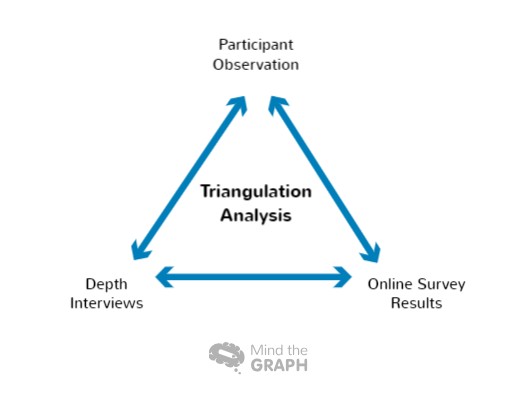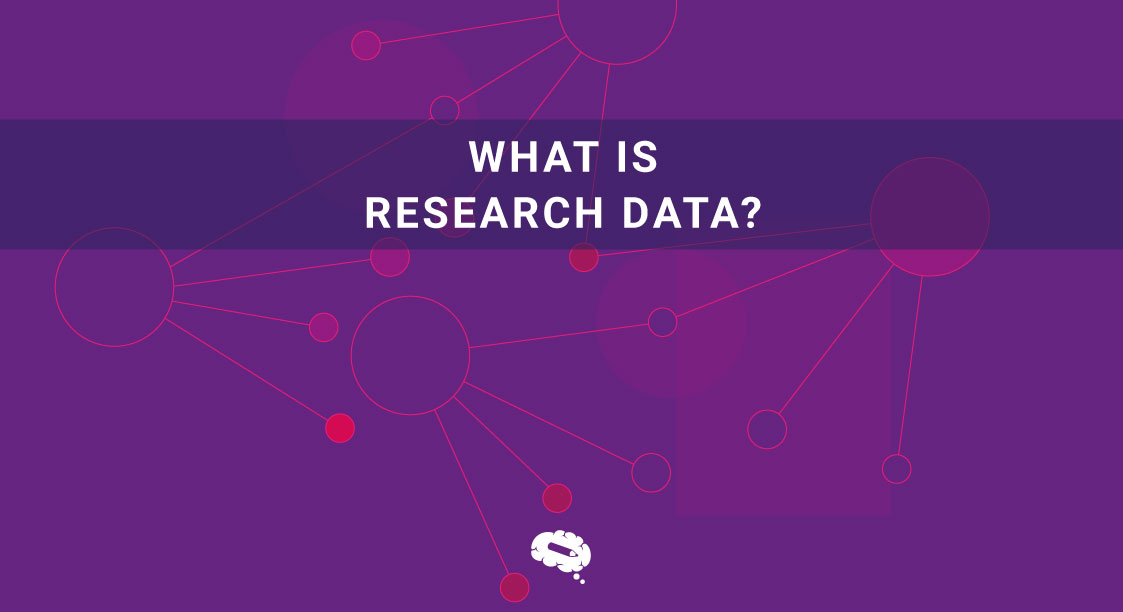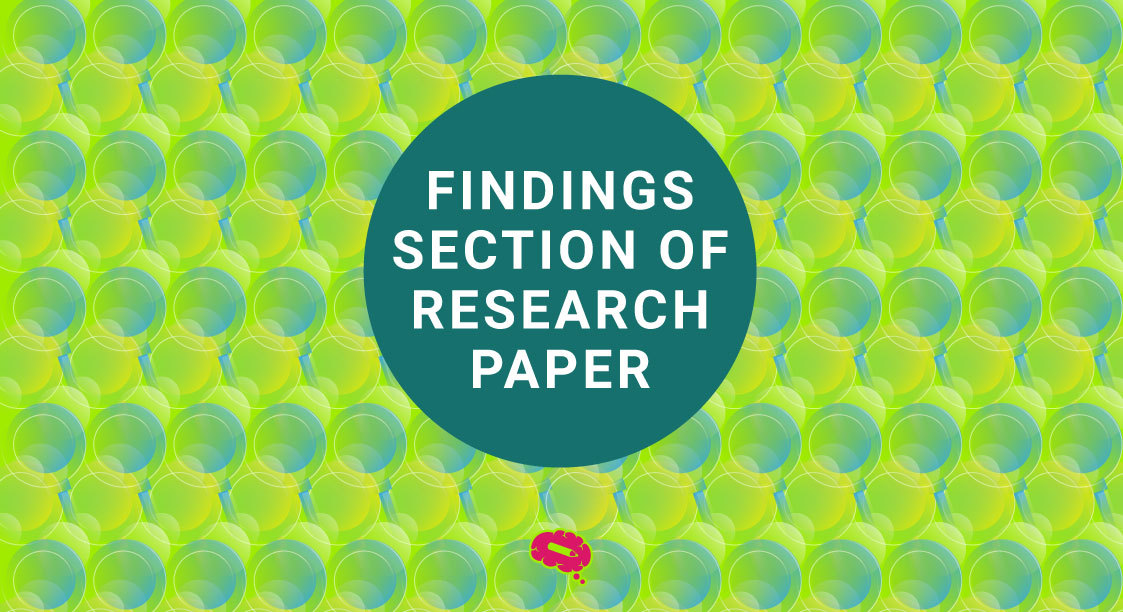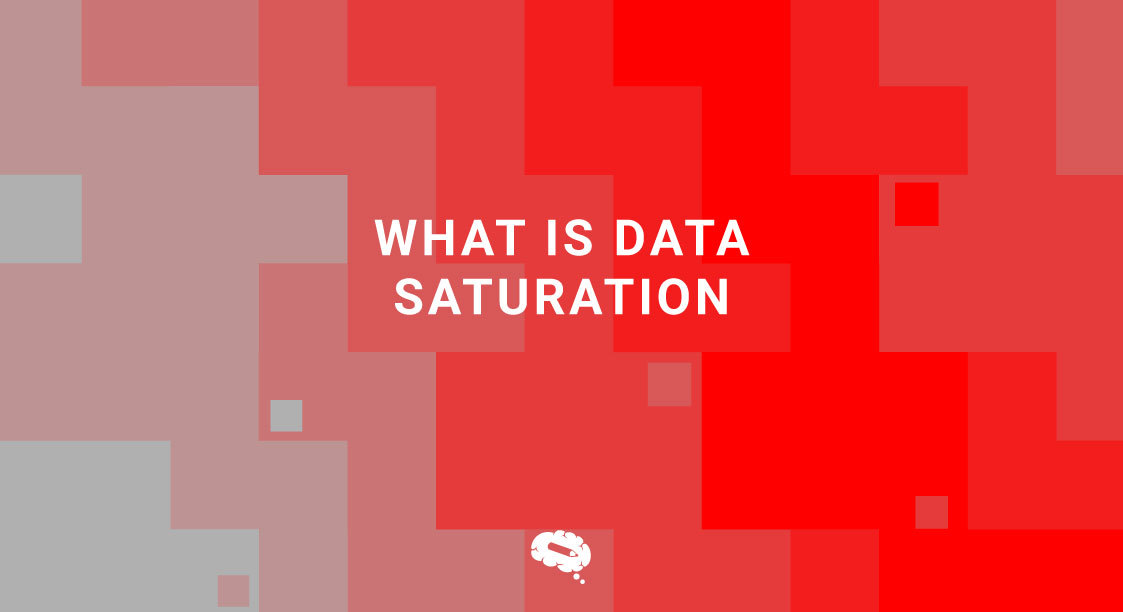One word stands out as a beacon for researchers seeking reliable and solid results in the broad universe of research methodology: triangulation. This powerful technique has become more widely recognized and significant in a wide range of fields, providing a pathway to improve the validity and reliability of research findings. Triangulation enables researchers to reduce biases, increase the depth of research, and eventually reach more trustworthy and thorough conclusions by merging diverse sources of data, methodologies, and perspectives.
The goal of this article is to answer the question “what is triangulation in research?” by clarifying the concept, identifying its guiding principles, techniques, and purposes.
What is Triangulation in Research?
Research triangulation is the process of examining a research topic or phenomenon from several angles, data sources, or methods. To improve the validity, reliability, and thoroughness of research findings, it entails merging several methodologies and information sources.
The concept of triangulation comes from surveying, where it is used to pinpoint an object’s exact location by using a number of reference points. Similar to this, triangulation in research aims to create a convergent and thorough understanding of a subject by examining it from various perspectives.
Researchers try to reduce the shortcomings and biases present in any single method or data source by using triangulation. They may employ it to cross-validate results, spot patterns or discrepancies, and develop a more comprehensive grasp of the research topic.

Types of Triangulation in Research
The overall strength and credibility of research findings are enhanced by many different types of triangulation, each of which has specific advantages. Here are some typical triangulation techniques used in research:
Data Triangulation
This type of triangulation uses a variety of sources or data types to obtain insight into a research topic. To support and validate their findings, researchers collect data using a variety of methods, including interviews, surveys, observations, and pre-existing records. The reliability and robustness of researchers’ results can be improved by merging several data sources.
Methodological Triangulation
Utilizing different methods or approaches to investigate a research question is known as methodological triangulation. To explore the same phenomenon from multiple perspectives, researchers use a variety of methodologies, including qualitative and quantitative methods, experimental and non-experimental designs, case studies, and surveys. Researchers can capture various aspects of the research topic and get a more thorough understanding of it by using complementary methodologies.
Investigator Triangulation
A research project including multiple researchers or investigators is known as investigator triangulation. The different perspectives, experiences, and biases that each researcher brings to the table can support and validate the findings of the others. The research process gets more rigorous when multiple researchers are involved as they may test each other’s assumptions and interpretations, which ultimately produces results that are more reliable.
Theoretical Triangulation
To interpret research findings, theory triangulation requires using several theoretical frameworks or perspectives. Researchers may use a range of theories to assess their data and compare their findings drawn from different perspectives. This method aids in the discovery of multiple facets or explanations for the phenomenon being investigated, enriching and deepening the analysis.
Time Triangulation
Studying a problem or phenomenon over a period of time is known as time triangulation. In order to identify changes, trends, or patterns across time, researchers examine the topic at multiple points in time. Researchers can recognize temporal fluctuations, comprehend the evolution of the phenomena, or determine long-term impacts by comparing data obtained at several time points.
Localization Triangulation
Studying a phenomenon or research subject in multiple settings or geographic locations is known as location triangulation. Researchers can take into consideration cultural, social, or environmental variables that might have an impact on the occurrence by conducting research in a wide range of settings. This method makes it easier to find general or context-specific elements that influence the study topic.
Purposes and Advantages of Triangulation in Research
Triangulation in research serves several important purposes that contribute to the overall quality and credibility of research findings. Here are three key purposes of triangulation:
Enhancing Validity
By lowering the possibility of bias and increasing the reliability of the findings, triangulation contributes to the validity of research. Researchers can confirm their findings and make sure that the conclusions are consistent by employing a variety of methods, data sources, or perspectives.
Gaining a Complete Picture
Research frequently involves complicated phenomena that can’t be fully understood by a single approach or data set. By combining different approaches, triangulation enables researchers to develop a more thorough understanding of the research topic. Researchers can discover many aspects, perspectives, or dimensions of the phenomenon they are studying by integrating different approaches, data sources, or theories. This all-encompassing approach aids researchers in presenting a more thorough and nuanced picture of the research topic.
Cross-Checking Evidence
Researchers can cross-check their data and validate their findings using multiple approaches through triangulation. Researchers may discover patterns, consistency, or discrepancies in the data by using a range of approaches or data sources. When results from multiple methods or sources are comparable, there is more reason to believe that the findings are accurate and reliable. If there are differences, on the other hand, researchers may investigate the causes and improve their interpretations. The robustness of the research findings is strengthened by this iterative process of cross-checking the evidence.
Disadvantages of Triangulation in Research
While research triangulation has many benefits, it’s vital to think about the possible disadvantages as well. A few disadvantages of using triangulation include the following:
Increased Complexity
Triangulation frequently entails the integration of many methodologies, data sources, or perspectives, which can make the research process more complex. In order to ensure coherence and compatibility between different methods, researchers must carefully plan and manage their integration. Triangulation can require additional resources and knowledge to be applied correctly. Data collection, processing, and interpretation may be difficult due to the complexity of triangulation, which necessitates that researchers carefully navigate and handle the complexities involved.
Resource Intensiveness
Triangulation may require a lot of resources in terms of funds, time, and work. Comparatively to a single-method study, performing multiple approaches or collecting data from multiple sources may take more time and effort. It can entail obtaining a larger sample size, educating researchers on different methods, or carrying out multiple types of data gathering. Research feasibility may be hindered by the need for more resources, both financial and human, especially in circumstances where those resources are scarce.
Increased Subjectivity
Researchers’ perceptions and analyses of the data might still be influenced by their own biases and perspectives, even when multiple techniques, data sources, or perspectives are combined. Findings from many sources may need to be integrated and synthesized, which could involve subjective decisions and perhaps introduce researcher bias. In order to achieve impartiality and openness throughout the triangulation process, researchers must be aware of their own biases.
Inconsistency
Triangulation can occasionally produce inconsistent findings. Researchers might find themselves dealing with discrepancies or inconsistencies among the data sources. Conflicting results might be difficult to manage and reconcile, necessitating further investigation or methodological improvement. The causes of inconsistencies must be carefully considered, and the implications must be evaluated rigorously.
Time-Consuming
As data from multiple sources or methodologies must be gathered, analyzed, and integrated, triangulation might make the research process lengthier. Triangulation may require an extensive amount of time and work, which could extend project timeframes or cause research to be completed later. Researchers must carefully examine whether the possible advantages of triangulation outweigh the related costs, taking into account the increased time and effort necessary.
When to Use Triangulation?
It is time to consider when to employ triangulation now that the key question, “What is triangulation in research?” has been addressed.
Triangulation is a valuable research approach that can be used in various situations. It is especially beneficial in the following situations:
- Confirming Findings: By utilizing a variety of methods, sources of data, or perspectives, triangulation helps validate and strengthen the reliability of the research’s findings.
- Exploring Complex Phenomena: Triangulation enables the exploration of complicated phenomena that cannot be fully understood by a single approach or data source.
- Mitigating Bias: Triangulation reduces bias by combining many methods, reducing the influence of individual biases, and increasing objectivity.
- Addressing Research Limitations: Triangulation overcomes the limitations of a single method or data source, enhancing the comprehensiveness and quality of the study.
- Enhancing Validity and Reliability: By offering convergent evidence from different approaches, triangulation increases the credibility and trustworthiness of research findings.
- Investigating Controversial or Sensitive Topics: When looking into controversial or sensitive topics, triangulation offers a more balanced and nuanced perspective.
When selecting whether to employ triangulation, researchers should carefully assess the research’s context, objectives, available resources, and the nature of the research topic.
Examples of Triangulation
A few examples of how triangulation can be used in research are provided below:
- Data Triangulation Example: A researcher studying how a new educational program affects student performance may gather data using a wide range of methods, including student surveys, teacher interviews, and academic record analysis. By combining these numerous data sources, the researcher can get a more thorough knowledge of the program’s effects and validate the results using a variety of data sets.
- Methodological Triangulation Example: A researcher may use both quantitative and qualitative methodologies in a study that focuses on the connection between exercise and mental health. In-depth interviews with a select group of participants could be used in combination with surveys to collect quantitative information on levels of physical activity and mental health scores. By integrating these two approaches, the researcher can gain a broader understanding of the subject, adding personal experiences and perspectives to data trends.
- Investigator Triangulation Example: Researchers involved in a project to examine how climate change affects biodiversity may have backgrounds in ecology, climatology, and social sciences, among other fields. Each researcher contributes their special knowledge and perspectives, working together to collect and examine data from multiple perspectives. They can cross-validate their findings by combining their knowledge and expertise, resulting in a thorough grasp of the intricate interplay between climate change and biodiversity.
Data Collection Methods for Triangulation
Here are some common data collection methods used for triangulation:
- Surveys: Using questionnaires or structured interviews, surveys collect data from a sizable sample of individuals in a consistent manner. Surveys can offer quantitative information that can be statistically evaluated and coupled with various sources of qualitative information.
- Interviews: Open-ended discussions take place with participants during interviews in order to collect comprehensive qualitative data. Insightful opinions and nuanced information that may not be gathered through other means can be obtained through interviews.
- Observations: Direct observation and documentation of behaviors, interactions, or occurrences happening in their natural environments are known as observations. With the use of this method, real-time and context-specific data may be collected to give a thorough grasp of the research topic.
- Document Analysis: Document analysis is the process of extracting pertinent information from existing documents, such as reports, articles, or archive records. To supplement primary data sources, this method can offer historical context, supplementary data, or additional perspectives.
Data Analysis Methods for Triangulation
Here are a few often employed triangulation techniques for data analysis:
- Comparative Analysis: Comparative analysis involves comparing and contrasting several data sources or methods of analysis in order to identify trends, patterns, or contradictions.
- Integration of Findings: Integration is the process of compiling data from multiple sources or methodologies into a single dataset that can then be analyzed.
- Cross-Validation: Cross-validation involves comparing results collected from different data-gathering methods or sources in order to assess the consistency and dependability of findings.
7 Steps on How to Conduct Triangulation
To conduct triangulation in research, follow these steps:
- Define Research Objectives: Clearly define the research objectives and questions to determine the purpose and scope of the triangulation approach.
- Select Data Collection Methods: Choose appropriate data collection methods that align with the research objectives and allow for complementary data collection. Consider the strengths and limitations of each method.
- Gather Data: Implement the selected data collection methods to gather relevant data from multiple sources or perspectives. Ensure data collection procedures are consistent, reliable, and ethical.
- Organize and Analyze Data: Organize and analyze the collected data using suitable methods and techniques. Apply comparative analysis, integration of findings, and cross-validation to identify patterns and ensure reliability.
- Interpret Findings: Compare and contrast the results from different data sources or methods to interpret the findings. Look for convergence or divergence to draw meaningful conclusions.
- Reflect on Limitations: Acknowledge and address the limitations or challenges associated with triangulation, such as bias or resource constraints. Reflect on their potential impact on research outcomes.
- Communicate Results: Clearly communicate the triangulated findings, highlighting the strengths, limitations, and implications of the research. Present the results comprehensively and transparently, acknowledging the sources of data and the analytical processes employed.
Growth in citations for articles with infographics
Articles featuring infographics typically get more attention and citations than those without them. With the help of Mind the Graph, researchers can produce aesthetically appealing and educational infographics that clearly describe their research while making it more approachable to a wider audience. This improved accessibility may help spread and impact scientific knowledge, potentially resulting in more individuals becoming aware of and citing the research.

Subscribe to our newsletter
Exclusive high quality content about effective visual
communication in science.





